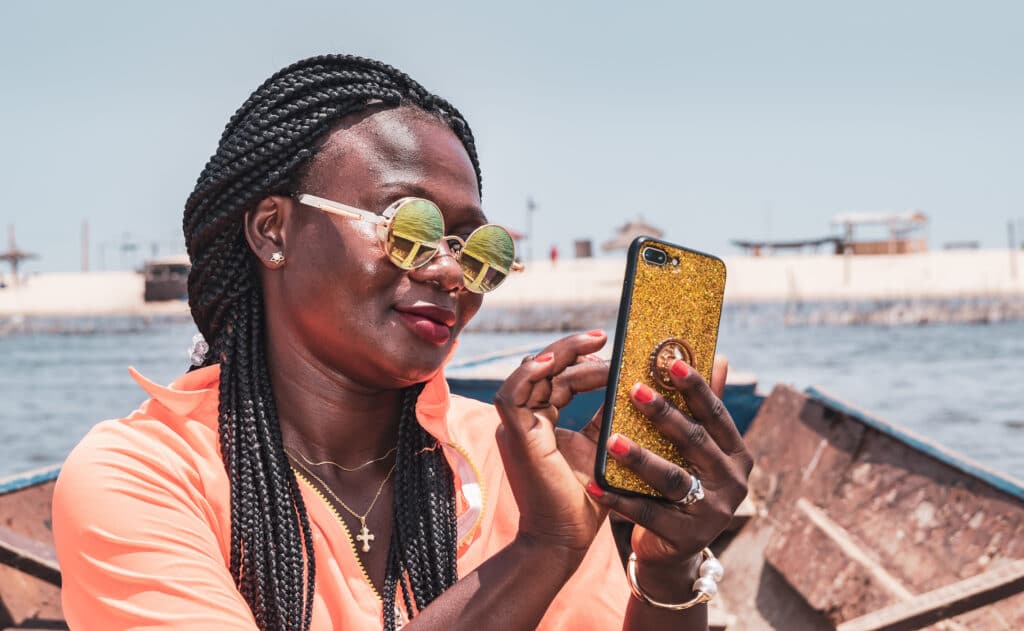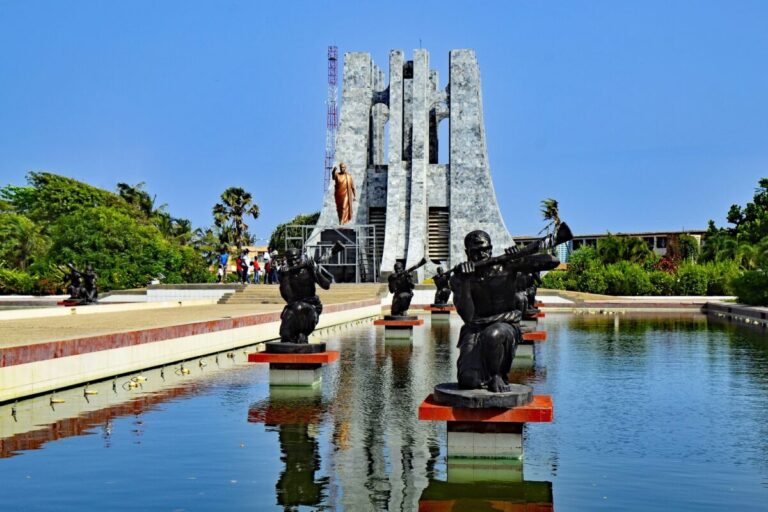Post Author
Cassidy Rush is a writer with a background in careers, business, and education. She covers local and international finance news about Canada for Remitly.
Ghana, once a British colony, now enjoys an independent government and a healthy economy. This beautiful nation on the west coast of Africa boasts a colorful currency known as the Ghanaian cedi (GHS, symbol GH₵). Issued by the Bank of Ghana, this national currency is divided into 100 pesewas. As the first nation in sub-Saharan Africa to gain its independence, Ghana’s had decades to fine-tune its currency. The result is a beautiful set of cedi banknotes, worth 1, 2, 5, 10, 20, 50, 100, and 200 cedis, coins worth 1, 5, 10, 20, and 50 pesewas, and a one-cedi coin.
Fun Facts about the Ghanaian Cedi
If you’re traveling to Ghana, plan on sending money home, or just want to know more, read on.
1. The Cedi Is Named for a Shell
Before the region was controlled by the British Empire, a major currency in Ghana was the cowry shell. Native to the Indian ocean, the shells arrived in the area in the 14th century. They were carried by Arab traders. Cowries continued to circulate as currency as late as 1901. The Akan word for cowry is cedi. This was the name chosen for the new currency when the nation of Ghana moved away from the Ghanaian pound. A few of the early coins bore a picture of a cowry shell.
2. It’s Ghana’s Fourth Currency
Ghana’s first currency after gaining independence was the Ghanaian pound. In 1965 this was replaced by the first cedi, which was divided into one hundred pesewas. In 1967, the government adopted the new cedi. Initially, it was worth one half of a British pound, but over decades it became so devalued that it was worth about a hundredth of an American cent. People had to carry their bills around in sacks! In 2007, the government introduced the “third cedi.” which was worth 10,000 of the old cedis. This made it worth about the same as an American dollar. However, in the years since, it’s continued to lose value. Only recently does it seem to have stabilized. The frequent changes in the cedi make it a goldmine for collectors: the Ghanaian pound, first cedi, and new cedi are all out of circulation and interesting to collect.
3. Most of the Bills Picture the “Big Six”
The one-, ten-, twenty-, and fifty-cedi bills all picture the same group known as the “Big Six.” These are six leaders of the United Gold Coast Convention, a political party in the era when Ghana was a British colony. Ghanaians consider them their founding fathers. The Big Six are:
- Kwame Nkrumah, who became Ghana’s first president
- Ebenezer Ako-Adjei
- Edward Akufo-Addo, who was a chief justice, a president, and the father of the current president, Nana Addo Dankwa Akufo-Addo
- Joseph Boakye Danquah
- Emmanuel Odarkwei Obetsebi-Lamptey
- William Ofori Atta
These six men were arrested by colonial authorities for speaking out against the British colonial government in 1948. It took nine more years of work before Ghana gained its independence in 1957—becoming the Republic of Ghana. It was the first West African nation to do so. Many of the Big Six were involved in the pan-African independence movement as well. The backs of the cedi bills depict important landmarks, such as the Akosombo Dam, which provides electricity to the nation, and the University of Ghana. Each denomination is a different color, making it easy to pick out the bill you need.
4. Yes, That’s Chocolate on the Coins
The twenty-pesewa coin has a picture of cocoa beans on it. Cocoa is a major export of Ghana, making it an important part of Ghana’s economy—as well as a tasty product for the rest of the world to appreciate. Other pictures on the coins include scales symbolizing justice and a book symbolizing education. The five-pesewa coin has a picture of a horn blower, which was a ceremonial role for the introduction of chiefs.
5. Meet the Woman on the Fifty Pesewa Coin
Ghana’s currency is a bit more feminist than that of the United States, which still has no women on its most common notes and coins. The fifty-pesewa coin bears the face of a woman. Some call her “the market woman,” but that’s a misconception—she isn’t an archetype or Ghanaian every woman. She’s an individual, Rebecca Naa Dedei Aryeetey. Born in 1923, Aryeetey made her fortune in the flour business. She financed much of the activity of the pro-independence Convention People’s Party, including the political career of the first president, Kwame Nkrumah. Sadly, she died suddenly at the age of 38, and many believe she was poisoned. Today she is not only remembered in money, but also in the name of Ghana’s double-decker buses, called “Auntie Dedei.”
6. Small Change Is Dying Out
The one-pesewa coin is so tiny, few people use it anymore. Instead, vendors give change in five-, ten-, twenty-, and fifty-pesawat coins. There are also one- and two-cedi coins. Unfortunately, some businesses are starting to refuse the five-cedi coin as well. If you travel to Ghana, keep this practice in mind.

Ghanaian Cedi Exchange Rates
For more on understanding foreign exchange rates or exchange rate history, our guide here has you covered. You can always check with your bank or your favorite money transfer company for current Ghanaian cedi exchange rates for different foreign currencies, too. For instance, when you log into the Remitly app and select Ghana as your destination, you’ll be able to see the current rates being offered for USD to cedi, GBP to cedi, and more. Lastly, a quick Google search for “currency converter” will reveal plenty of free tools for checking today’s exchange rates.

